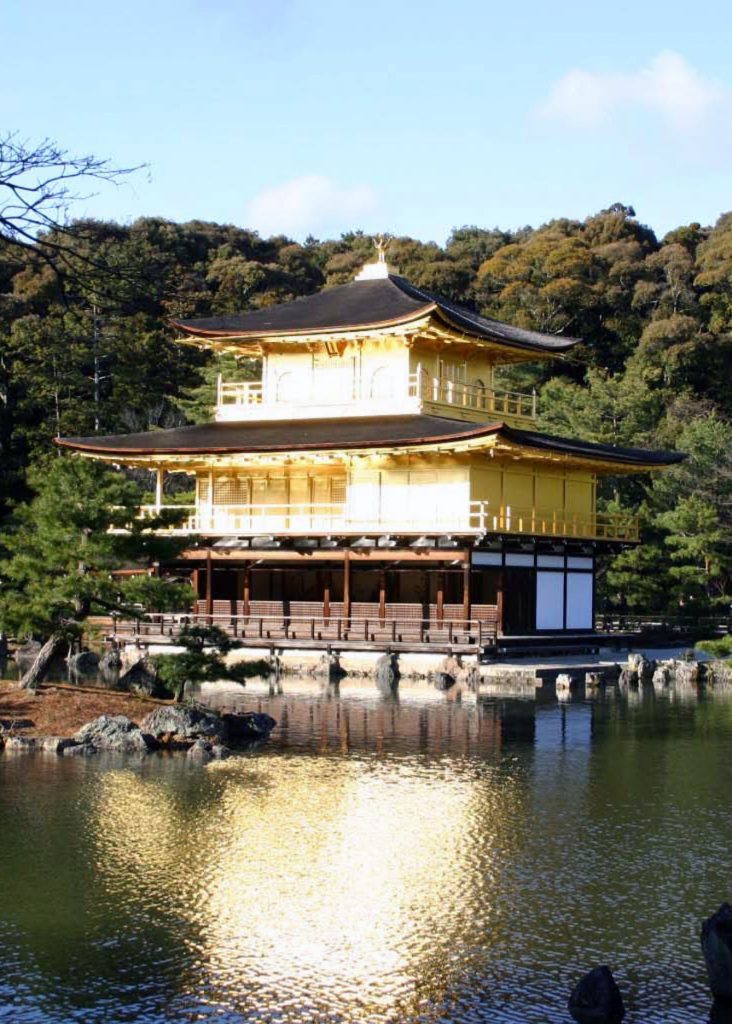
The area around Kinkakuji is completely colored, and fallen leaves are piled up around it. Only Kyoko Pond reflects the upside-down Kinkaku and shines in golden color. If it’s not Kinkakuji, the pond should reflect a temple surrounded by autumn leaves. Kinkakuji, which is a symbol of beauty and power, has been reflected in the mirror lake for 800 years. However, about 70 years ago, Kinkakuji was burnt down by a 21-year-old learned monk, and was rebuilt five years later. Yukio Mishima wrote the novel “Kinkakuji” from an aesthetic point of view, and Tsutomu Mizukami wrote the novel “Kinkakuji Burning” in a documentary style. By reading and comparing the two novels, the incident of the Kinkakuji burning is made to think from both the conceptual side and the realistic side, and many suggestions can be obtained.
金閣寺周辺もすっかり紅葉し、周辺には落ち葉が積もっています。鏡湖池(きょうこち)だけは逆さ金閣を映し出し、黄金色に輝いています。もし金閣寺でなければ、池には紅葉に囲まれた寺院が映っているはずです。美の象徴でもあり、権力の象徴でもある金閣寺は800年の長きに渡って、その姿を鏡湖池に写し続けてきました。ただ今から70年ほど前に21歳の学僧によって焼け尽くされ、5年後に再建されたのが今の金閣寺です。三島由紀夫は美学的観点から小説『金閣寺』を書き上げ、水上勉はドキュメンタリー風に小説『金閣寺炎上』を書き上げました。二つの小説を読み比べることによって、この金閣寺炎上という事件が、観念的側面と現実的側面の二面から考えさせられ、多くの示唆が得られます。
